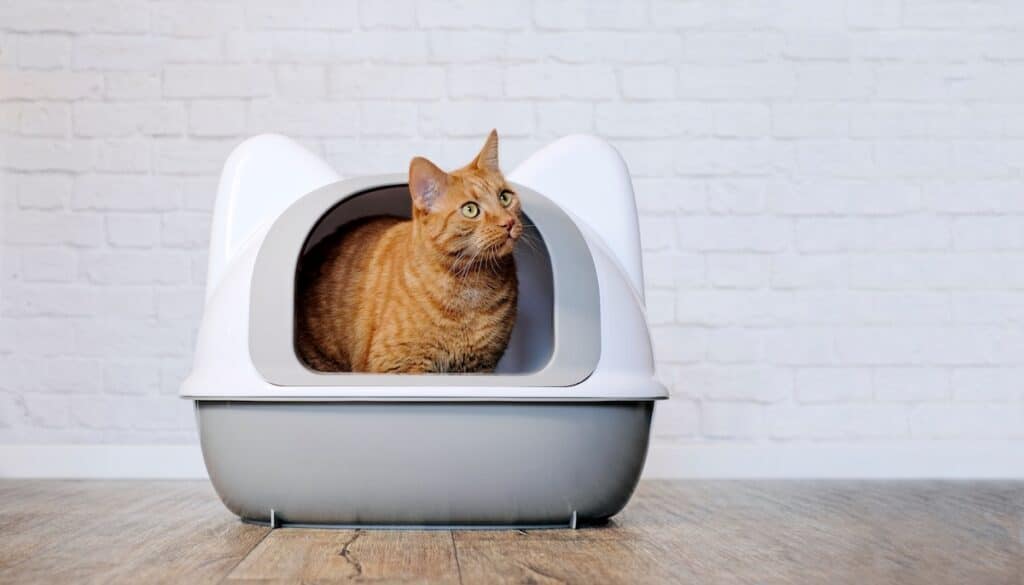You may tell your cat must be uncomfortable when you see that he or she is struggling to urinate or can’t urinate at all. The most common cause of this stifling is cystitis, often called as bladder inflammation. You will understand your cat’s situation if you have ever had cystitis. Simple cystitis is bad enough, but it can progress to more serious emergencies like the development of bladder stones or a urethral plug, a potentially fatal condition that leads the cat (almost always a male) to become “blocked” (i.e., unable to urinate). Therefore, it’s crucial that you get veterinary help as soon as you realize that your cat is unable to urinate or is having difficulty urinating.
What to Watch For
The cat will frequently try to urinate, producing little to no pee, which is typically stained with blood. The obstructed cat may exhibit more severe symptoms. The majority of the time, a blocked cat is a male because to anatomical differences. The cat frequently meows in agony as it becomes gradually lethargic. Due to the inability to empty the bladder, the cat becomes extremely ill and may even die as a result.
Primary Cause
A bacterial infection, a mineral imbalance, and/or an irregularity in the cat’s pH levels are the usual causes of cystitis, or a bladder infection. This helps to create the tiny mineral crystals that can develop to be stones or the grit that produces the urethral clog in the urine.
Immediate Care
Once the symptoms are identified, there is not much that can be done at home. A male cat should ALWAYS be checked by a veterinarian IMMEDIATELY due to the possibility of a urethral clog developing. A female cat should be evaluated in 24 hours, or earlier if additional signs are present (vomiting, lethargy, etc.)
Veterinary Care
Diagnosis
Your veterinarian will be able to swiftly establish if your cat is obstructed after the initial physical examination and discussion of the symptoms you are observing. The tests listed below may be utilized once this has been established:
- Confirming cystitis by a urine test (urinalysis)
- Cultured urine to determine the infectious agent
- X-rays to look for bladder stones or grit
- analysis to establish the composition of the stone or urethral plug
Treatment
If your cat has a basic cystitis, it will likely be given antibiotics and sent home. On the other side, surgery will be required if there are bladder stones. If your pet is obstructed, hospitalization for several days is necessary. She will be given a urinary catheter and given sedation so that the bladder can be drained.
In order to completely flush out the grit from the urinary system, the catheter is then remained in place for one to three days while IV fluid therapy is administered. Once your cat is able to urinate normally, she is often discharged and given medicines for antibiotics and muscle relaxants to help the urethra loosen up. Antibiotics and a specialized prescription meal may also be used in some situations to dissolve the stones.
Other Causes
- Kidney Disease
- Idiopathic Cystitis (bladder inflammation of unknown cause)
- Cancer
Living and Management
Following therapy, keep an eye on your cat for 4 to 8 weeks to see whether the symptoms return. A second urinalysis and culture are frequently requested. Surgery to increase the urethral aperture is typically advised if a cat frequently blockages.
Prevention
The greatest ways to avoid cystitis are eating high-quality food, drinking lots of fresh water, and maintaining a clean litter box. Your cat will be put on a prescription diet that will change the urine’s composition and reduce the likelihood of recurrence if she has experienced stones, has been “blocked,” or has experienced multiple episodes of cystitis. The food comes in a variety of brands, but if your cat rejects any of them, there are medications that can change the pH of the urine, which may also help avoid recurrence. However, both treatments often need to be ongoing.














